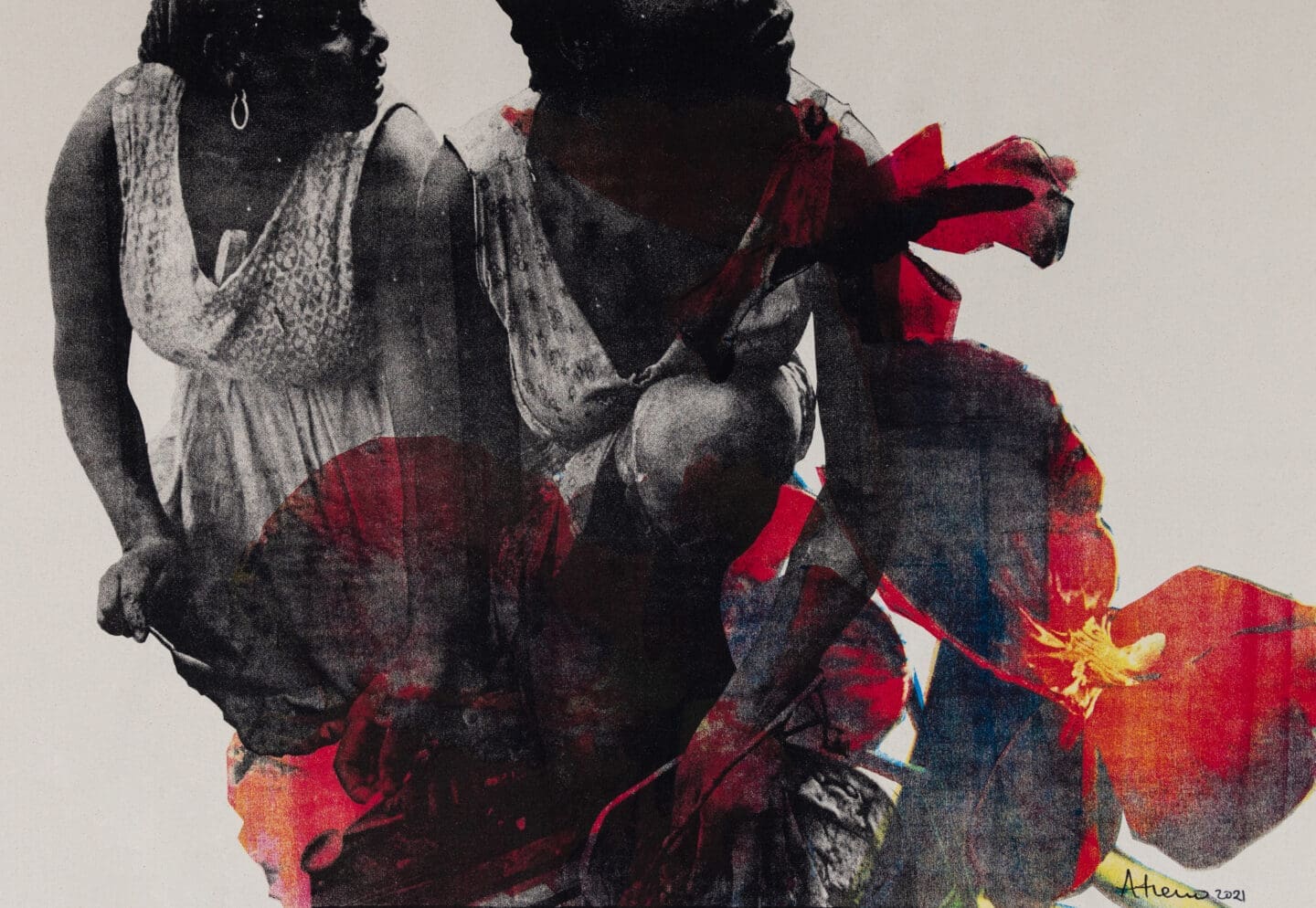Their goal was to curate an exhibit that embodies The Rockefeller Foundation’s belief that visual artists can identify issues, imagine solutions and inspire change.
The result is an installation of 32 artworks that champions emerging and mid-career artists whose work expands our perceptions and understanding of the challenges and opportunities for our shared humanity in this current moment.
These artworks invite viewers to disrupt what we think we see and what we think we know.
Zun LeeSGJ Co-Lab Member
Works by Mitchell Squire and Eric Hart, Jr., for instance, encourage us to: “question identity and nation-state logic, while creating fluid alternative cartographies that reject settler colonial ways of ‘seeing’ and ‘being,’ while disrupting mainstream expectations and monolithic notions of ‘the other’ in ways that don’t allow for easy commodification of well-trodden ‘diversity and inclusion’ viewpoints,” said SGJ Co-Lab member Zun Lee.
Art that Questions the World
Iranian artist Ghazaleh Avarzarmani’s ‘Fortune Teller’ conveys how innocent-seeming children’s games can lead to the construction of rules, laws and systems of dominant power structures. Similarly, Iranian artist Tannaz Farsi produced a steel sculpture of the word ‘Citizen’ in English. Made with a dissolving typeface resembling Arabic script in order to playfully disrupt the semantics of the word, it provokes consideration about those living under state-sanctioned control.
Many of these artists use their choice and manipulation of materials as powerful signifiers to the artwork’s meaning. For example, Tahir Karmali’s piece “Swallowing Soil” is made of ground-up guns as well as steel, hardware and rubber that reference the global supply chain. “I am invested in transforming these materials into varying formats that are deceptively beautiful or attractive, as an art form, allowing the viewer to savor them as primary material before a layer of the trauma of migration, displacement, and labor slowly reveals itself,” Karmali said.
Several pieces use weaving to connect multiple layers of meaning to question the world we have inherited. The use of rubber in Patrick Bongoy’s mixed media panels signifies both the aftermath of colonialism and the impacts of climate change in Africa. For Gyun Hur, handmade glass bulbs containing river water simultaneously intertwine grief and ecology, the constant flow of letting go and generating life.
Kostianovsky’s sculptures depicting ‘wounds’ constructed out of fabric scraps blend her experiences in South America with the destruction of land and bodies, personal and cultural trauma.
The way that Alvin Luong manipulates his photos with water suggests climate change and migration from war.
Artist Sonia E. Barrett deconstructs maps of places implicated in the slave trade (Atlantic coasts of Africa, South America, Caribbean and the USA) as an act of literally cutting up Western European hegemony. She then weaves them back together using black hair braiding techniques as an act of reclamation.
Lizette Chirrime (Mozambique) and Alexis Zoto (Albania) apply traditional women’s’ weaving techniques to manipulate mixed media and contemporary issues into powerful statements about compassion and healing. Both women suggest timeless traditions of women weaving together trauma and hope in their craft.
Art That Offers Possibilities for the Future
Several works seek to make visible what is hidden in order to offer possibilities for the future.
Brenda Mallory’s mixed media pieces are held together by deliberately tenuous connections in order to expose our society’s false constructs of land ownership, habits of consumption and waste generation. At the same time, she honors the invisible and often unpaid laborers who create the cheap objects that we consume.
Philip A. Robinson uses mirrors to literally make the viewer as part of the work: he makes them visible in order to explore issues of identity.
Finally, past and future storytelling in the work of Cecile Chong and Osvaldo Macharia are mingled together in order to challenge dominant narratives and help us all imagine new possibilities.
Through its innovative approach to selecting and curating artwork for its newly renovated headquarters, The Rockefeller Foundation has underscored the profound impact that art can have on inspiring positive change. The permanent collection serves as a testament to the belief that visual artists possess a unique ability to shed light on pressing issues, envision solutions, and ignite a passion for progress. By inviting viewers to question the world around them, disrupt conventional thinking, and envision new possibilities, these artworks become beacons of hope, empathy, and empowerment. As we stand at the crossroads of global food access, healthcare, economic opportunity, clean energy, and the fight against climate change, The Rockefeller Foundation’s artistic initiative sets a powerful example for grantmaking and philanthropy, demonstrating that embracing art and creative expression can forge a path towards a brighter, more hopeful, and more sustainable future for all.
SGJ Co-Lab is a collaborative entity created by Simone Joseph of SGJ Fine Art, along with Nell Daniel and Bo Joseph. The art selection was guided by SGJ Co-Lab’s Advisory Board: Zun Lee, Sara Jimenez, Eto Otitigbe, Maria Ann Conelli, Karen Revis, Alva Mooses, and Eshrat Erfanian.
Related Updates
